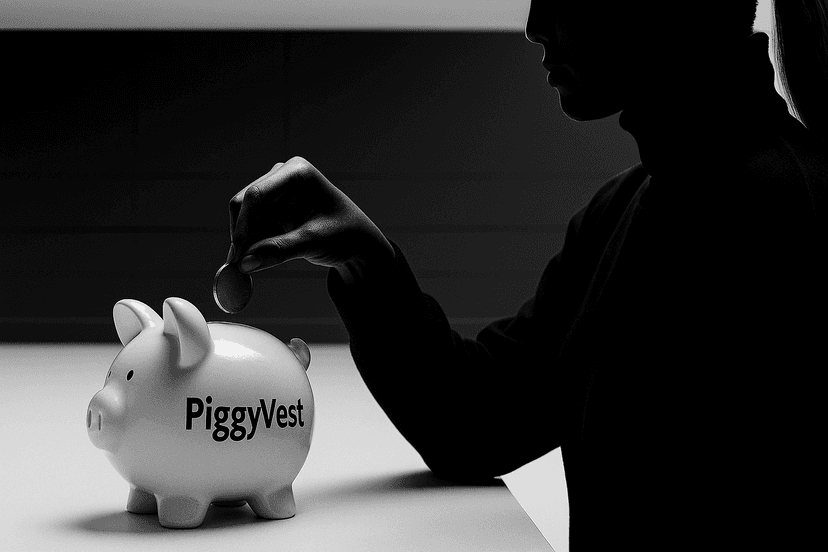How to Build an Emergency Fund Quickly
8/10/2025
James Oluwaleye
An emergency fund is your financial safety net. In this guide, you’ll learn simple, practical steps to save money fast even if you’re on a tight budget so you’re prepared for unexpected expenses without going into debt.

How to Build an Emergency Fund Quickly
- 1.Know Your Goal
- 2.Open a Separate Account
- 3.Cut One Expense and Redirect It
- 4.Use the “Extra Money” Trick
- 5.Sell Things You Don’t Use
- 6.Take on a Small Side Gig
- 7.Automate Your Savings
- 8.Keep Your Fund Untouchable
- 9.Track Your Progress
- 10.Refill After You Use It
- 11.Example Plan to Reach $1,000 in 3 Months
- 12.Common Mistakes to Avoid
Life can surprise you when you least expect it. Losing a job, getting unexpected medical bills, or needing to fix your car can quickly drain your savings. That’s why having an emergency fund is so important, it acts as a safety net when life throws challenges your way. Instead of borrowing money or freaking out, you’ll have cash set aside for those tough times.
This guide will help you build that emergency fund quickly, even if you think you don’t have much extra money right now. The key is to start small, stay consistent, and use smart strategies to grow your fund step by step.
Know Your Goal
Before you start saving, decide how much you want to save. The usual advice is to save three to six months’ worth of your living expenses, but that can feel overwhelming if you’re just getting started. Instead, aim for a smaller, more achievable goal first, like saving $500 to $1,000.
This smaller goal can cover many common emergencies and gives you a sense of accomplishment. Once you reach it, you can feel confident and continue to build your fund from there.
If money is tight, focus on the $1,000 goal first. That’s enough to protect you from most small emergencies without feeling impossible.
Open a Separate Account
It’s easier to save if your emergency fund is kept separate from your everyday money. If everything is mixed together, you might be tempted to spend your savings when you don’t really need to.
Open a savings account just for your emergency fund. Look for one with a good interest rate, no monthly fees, and no debit card attached, so you’re less likely to spend it on non-emergencies.
Cut One Expense and Redirect It
You don’t have to change your entire budget right away. Instead, choose one small expense you can cut and send that money straight into your emergency fund each month.
This could mean canceling a subscription you don’t use, making coffee at home instead of buying it, or cooking more meals at home instead of eating out. Even small changes like these can add up quickly and help build your fund without feeling like a huge sacrifice.
Saving $50 a week adds up to about $200 a month, that’s $1,000 in just five months!
Use the “Extra Money” Trick
Whenever you get unexpected money, like a work bonus, tax refund, or a gift, put at least half of it into your emergency fund. This way, you can boost your savings without affecting your regular spending budget.
Think of this money as bonus cash, not money to spend. It’s a great way to give your fund a quick boost without feeling like you’re missing out.
Sell Things You Don’t Use
Look around your home for items you no longer need or use. Selling these things can quickly add cash to your emergency fund.
You can use local selling platforms like Facebook Marketplace for quick sales, or eBay if you have electronics or collectibles. Selling just 10 or 15 unused items can easily bring in a couple hundred dollars.
Take on a Small Side Gig
If you want to speed things up, consider a short-term side job. It doesn’t have to be a permanent or full-time gig, even a few extra hours a week can make a difference.
You could try food delivery, freelance work, babysitting, pet sitting, tutoring, or seasonal jobs. These small extra incomes can help grow your emergency fund faster than cutting expenses alone.
Automate Your Savings
The easiest way to save is to do it automatically. Set up automatic transfers from your checking account to your emergency fund right after you get paid.
Even saving just $25 a week automatically can grow your fund to over $1,300 in a year, all without you having to remember to move money around.
Keep Your Fund Untouchable
Your emergency fund is only for real emergencies, like losing your job, unexpected medical bills, or urgent repairs to your car or home.
Don’t use this money for vacations, gadgets, or non-urgent expenses. Treating it like extra spending cash defeats its purpose and leaves you unprepared when a true emergency arises.
Track Your Progress
Watching your savings grow is motivating. Use a simple spreadsheet, a finance app like Mint or YNAB, or even print out a chart to fill in as you save.
Seeing how close you are to your goal helps keep you motivated, especially during tough months when saving feels difficult.
Refill After You Use It
If you ever have to use money from your emergency fund, make it your top priority to refill it. Don’t wait or put it off, restart your savings plan and build back up to your goal as soon as possible.
For example, if you use $500 for car repairs and your fund drops to $700, focus on saving until you’re back to $1,200 before putting money toward anything else.
Example Plan to Reach $1,000 in 3 Months
In the first month, you might cut $50 a week from dining out and sell some old electronics, saving around $400. In the second month, take a weekend side gig and cancel an unused gym membership to add another $200. In the third month, put half of your tax refund into savings and keep up the $50 weekly cuts for another $300. That’s $900 in three months, very close to your goal.
Common Mistakes to Avoid
Starting too big can kill your motivation, focus on reaching $1,000 first. Don’t keep your fund as cash at home where it’s easy to spend. Don’t think you can “save later” start now, even if it’s just a few dollars. And never treat your emergency fund like extra spending money. It’s your safety net, not money for fun.
Building your emergency fund quickly is possible, no matter your income or expenses. Start small, stay consistent, and use these simple tips to grow your fund. When life throws a surprise your way, you’ll be ready, calm, confident, and prepared.
The best time to start was yesterday. The second best time is today. Even if it’s just $10, begin now.


